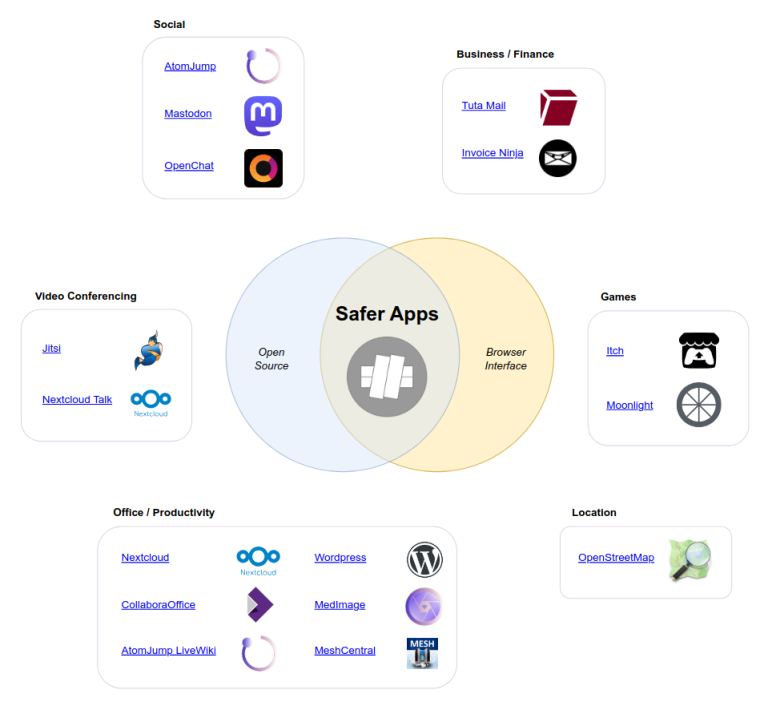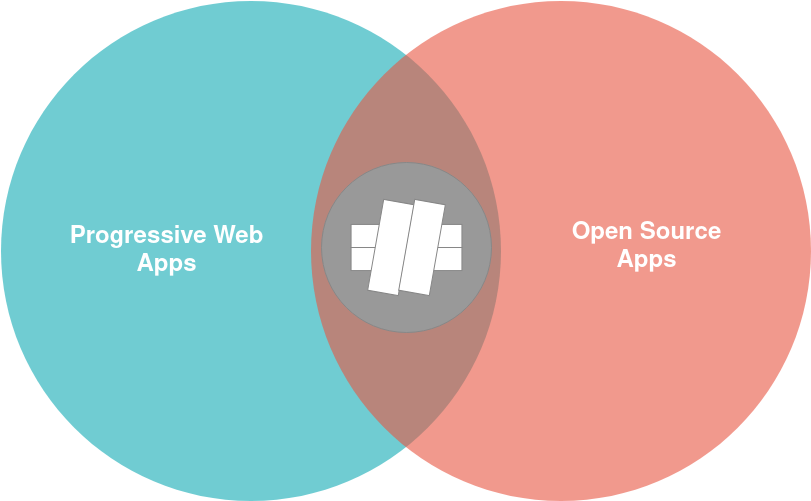Below we've shown a selection of "Safer Apps", which meet both criteria for this program:
1. Being "open source" (i.e. the software innards are transparent, and open to peer-review)
2. They run in a standard web browser interface (which means they stream to your computer in a safer "plain text" format, rather than as a "binary")
You may want to Expand the picture to explore the apps.





